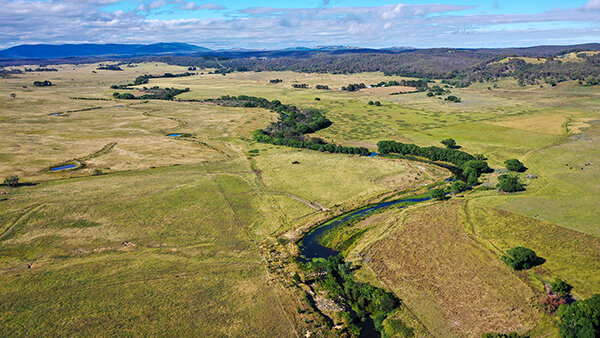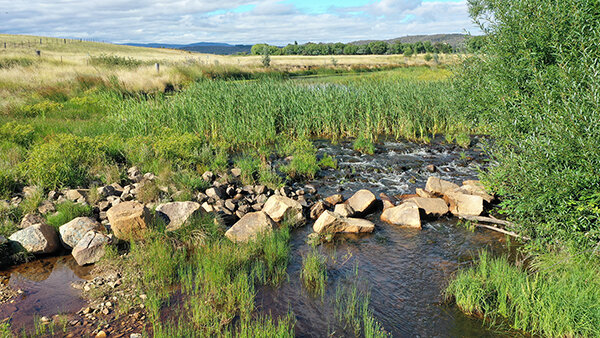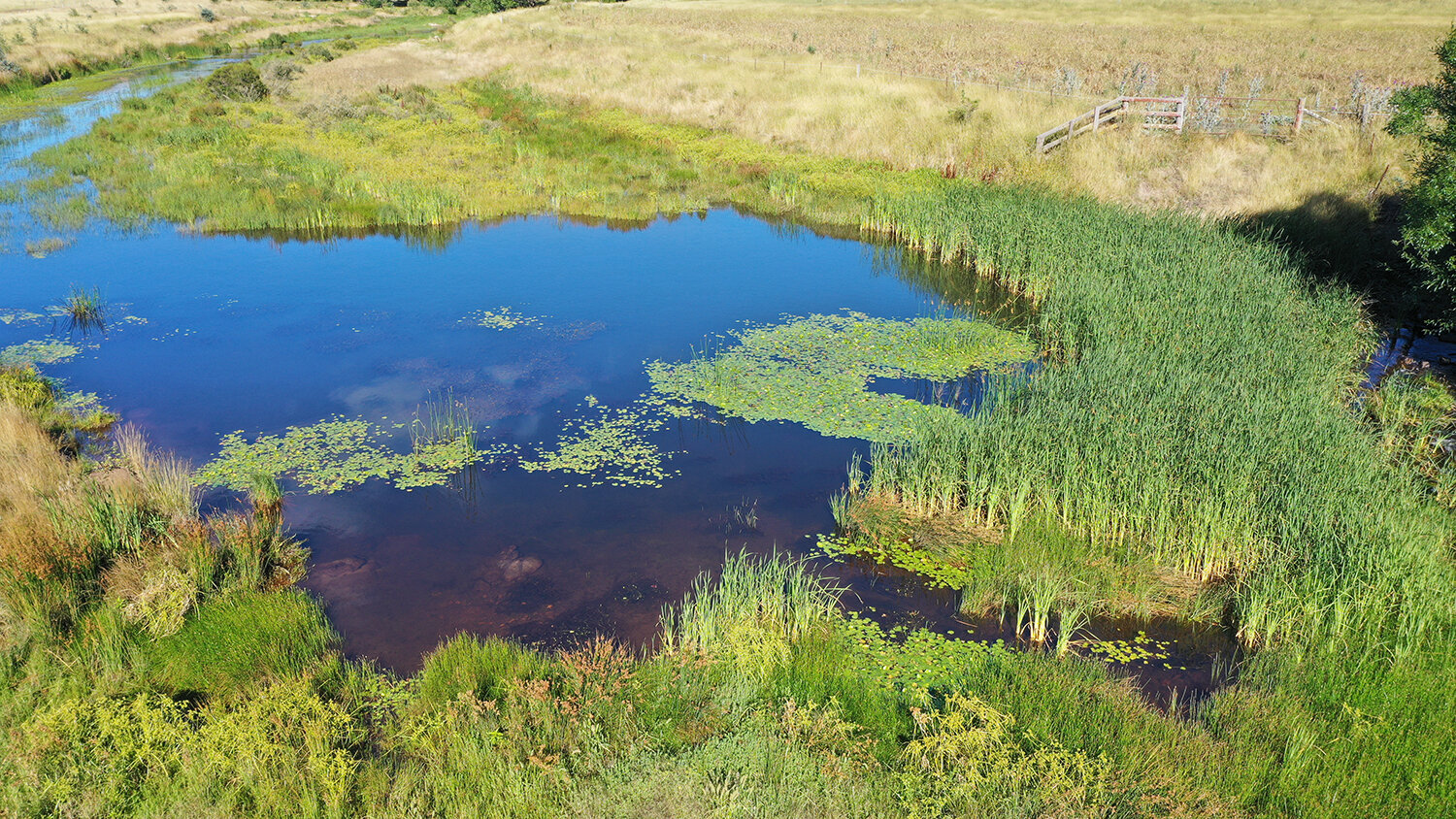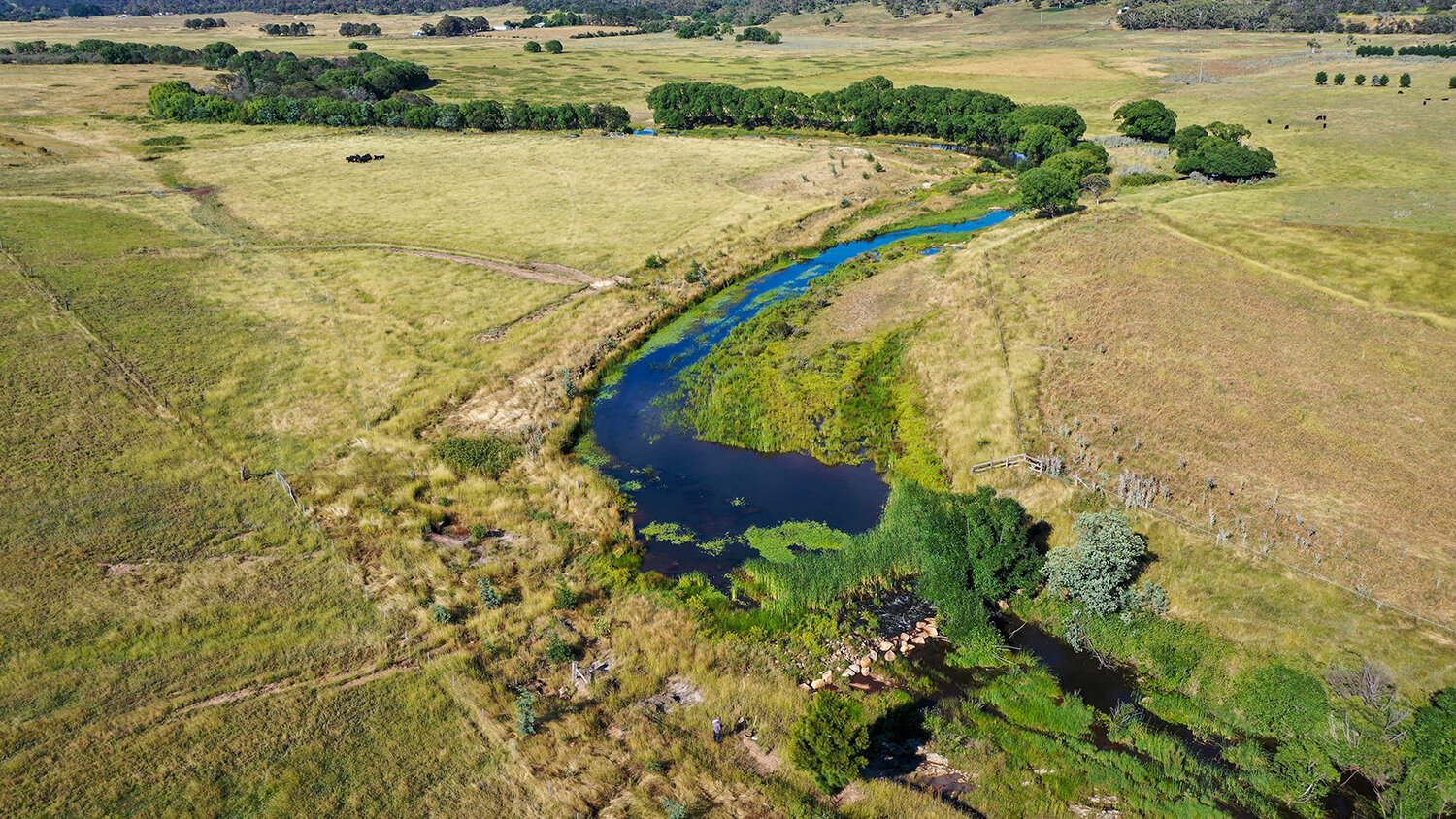Lower Mulloon, Stage 1 in the Mulloon Rehydration Initiative, December 2020.
On-ground works in the Mulloon Rehydration Initiative (MRI) have been paused for the time-being while we apply for the two remaining ‘Controlled Activity Approvals’ for Mulloon Creek from the NSW Government’s Natural Resources Access Regulator.
Once we’ve received the CAA’s we’ll resume on-ground works, before we move up to Sandhills Creek which is a 4,000 ha tributary of Mulloon Creek. To date, more than 50 leaky weir structures have been installed over 15 km of Mulloon Creek.
Abundant growth around the leaky weir installed at ‘Westview’.
Given the weather conditions during the last 12 months, it is also a good time to pause the construction activities and watch nature do her thing. It has in fact been the wettest 12 months at Mulloon for the past 70 years. Highlighting nature’s extremes, we’ve gone from the driest period in living memory at the beginning of 2020, immediately into the wettest period in living memory.
These extreme climate cycles are a really important test for the MRI. Consistent high flow conditions in the creek test the physical integrity of the structures. Their long term sustainability relies on good establishment of vegetation on and around them. With conditions flipping immediately from drought to flood, and given the extreme winters that Mulloon endures, many of the structures have not yet had the chance to establish good vegetation. Despite this, they are holding firm and this spring will see an amazing flush of riparian and aquatic vegetation.
The current conditions have also highlighted the importance of building good creek crossings. Creek crossings are also leaky weir sites. They need to be well designed and armoured to avoid scouring during high flow events. It’s no good rehydrating your creek and floodplain if you can’t cross it during wet times.
Importantly, the groundwater monitoring data is showing that the creek works and the wetter conditions are indeed rehydrating the floodplain. Time and monitoring will tell us the impact that the leaky weir structures are having on the health and vitality of the 1,100 ha floodplain that is now under the influence of the on ground works.
The Mulloon Rehydration Initiative is jointly funded through the Mulloon Institute and the Australian Government’s National Landcare Program. The initiative is also assisted by the NSW Government through its Environmental Trust.





